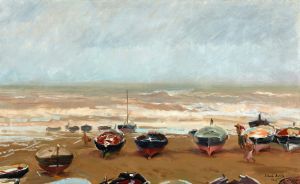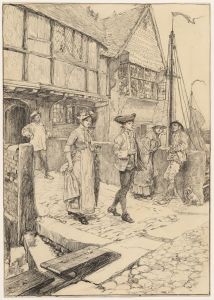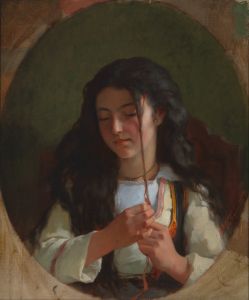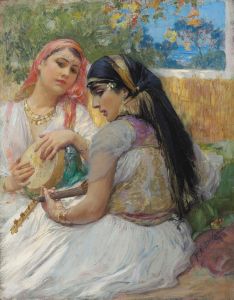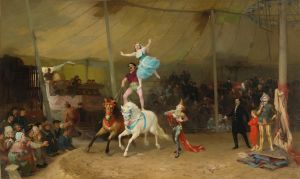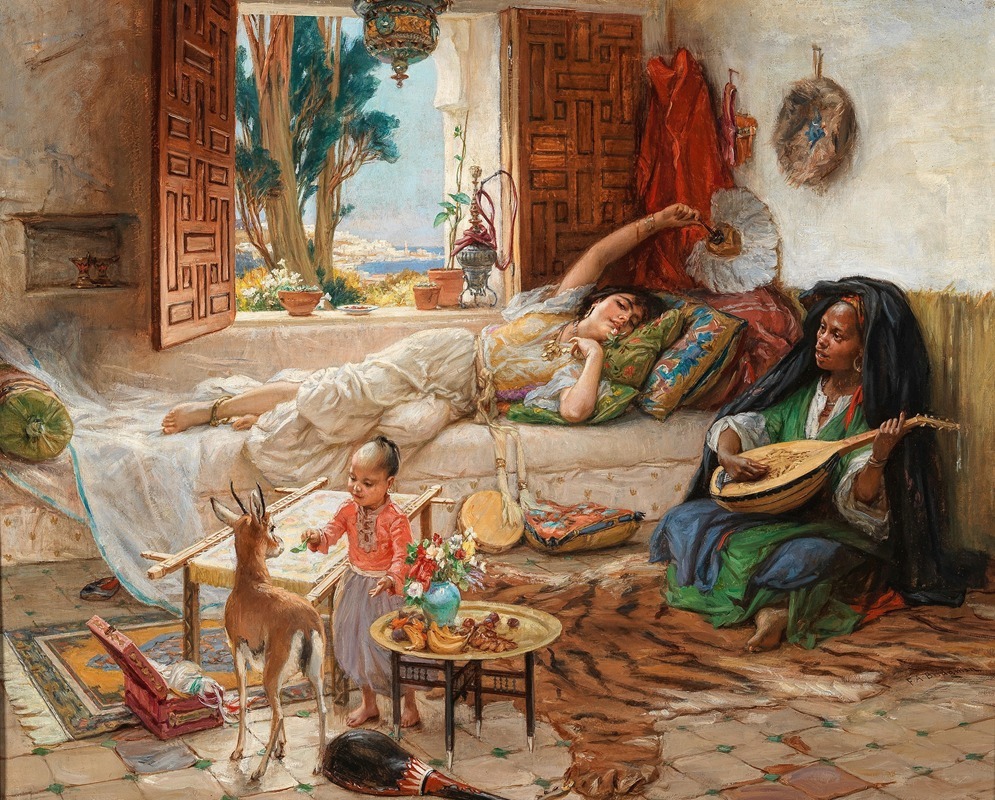
An Afternoon in Algiers
A hand-painted replica of Frederick Arthur Bridgman’s masterpiece An Afternoon in Algiers, meticulously crafted by professional artists to capture the true essence of the original. Each piece is created with museum-quality canvas and rare mineral pigments, carefully painted by experienced artists with delicate brushstrokes and rich, layered colors to perfectly recreate the texture of the original artwork. Unlike machine-printed reproductions, this hand-painted version brings the painting to life, infused with the artist’s emotions and skill in every stroke. Whether for personal collection or home decoration, it instantly elevates the artistic atmosphere of any space.
Frederick Arthur Bridgman was an American artist known for his detailed and vivid depictions of Orientalist themes. Born in 1847 in Tuskegee, Alabama, Bridgman became one of the most prominent American artists to travel to and paint scenes from North Africa and the Middle East during the late 19th century. His works are characterized by their meticulous attention to detail and vibrant portrayal of the cultures he encountered.
"An Afternoon in Algiers" is one of Bridgman's notable paintings, capturing a scene from the bustling city of Algiers, the capital of Algeria. Bridgman was part of a broader movement of Western artists who were fascinated by the exoticism and perceived romance of the Orient, a term used at the time to describe the cultures of North Africa, the Middle East, and parts of Asia. This movement, known as Orientalism, was marked by a blend of fascination and fantasy, often reflecting Western stereotypes and imaginings of Eastern life.
Bridgman's work, including "An Afternoon in Algiers," is celebrated for its rich detail and vibrant color palette. He had a unique ability to capture the light and atmosphere of the locations he painted, which is evident in this piece. The painting likely depicts a typical scene in Algiers during the late 19th century, showcasing the daily life and architecture of the city. Bridgman's attention to detail is apparent in the intricate depiction of clothing, architecture, and the play of light and shadow.
Bridgman spent a significant amount of time in North Africa, particularly in Algeria and Egypt, which greatly influenced his artistic output. His travels allowed him to gather a wealth of visual information and inspiration, which he meticulously translated onto canvas. Bridgman's works were well-received in both Europe and America, and he exhibited regularly at the Paris Salon, where he gained considerable acclaim.
"An Afternoon in Algiers" reflects Bridgman's commitment to capturing the essence of the places he visited. While his works are often romanticized, they provide a window into the 19th-century Western perspective on Eastern cultures. Bridgman's paintings, including this one, are valuable not only for their artistic merit but also for their historical context, offering insights into the cultural exchanges and perceptions of the time.
Bridgman's legacy as an Orientalist painter is significant, and his works continue to be studied and appreciated for their artistic and cultural contributions. "An Afternoon in Algiers" remains a testament to his skill as a painter and his fascination with the diverse cultures he encountered during his travels. His ability to convey the vibrancy and complexity of these scenes has ensured his place in the history of art as a key figure in the Orientalist movement.





